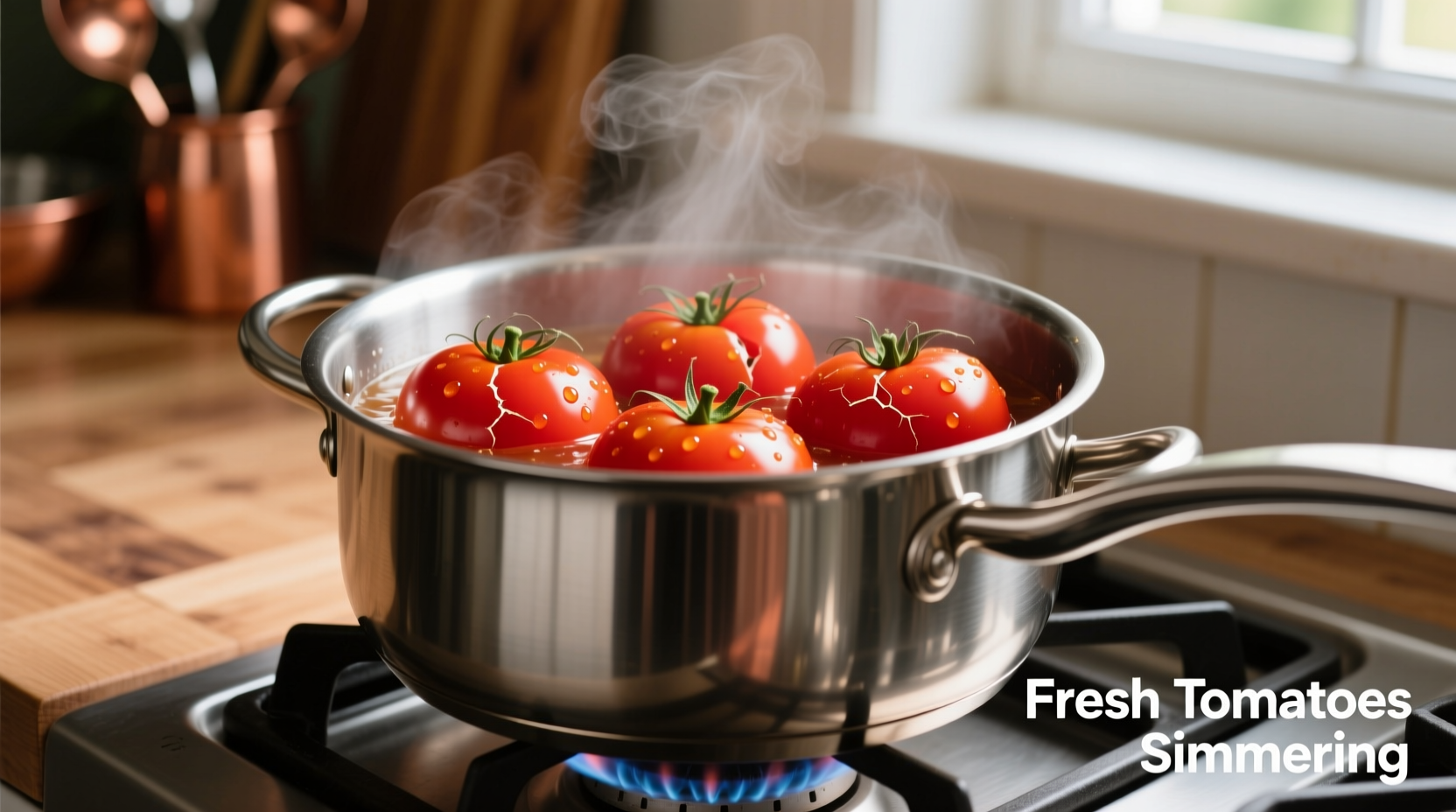There's nothing quite like the bright, garden-fresh taste of homemade tomato sauce made from vine-ripened tomatoes. Unlike store-bought alternatives, fresh tomato sauce captures summer's essence in every spoonful while offering significant nutritional advantages. Professional chefs consistently prefer fresh tomato sauce for its vibrant flavor profile and versatility in dishes ranging from pasta to pizza.
Why Fresh Tomatoes Make Superior Sauce
Fresh tomatoes contain higher levels of volatile compounds that create complex flavor notes lost during commercial canning processes. According to research from the University of California Davis Department of Food Science, fresh tomato sauce retains up to 35% more lycopene—a powerful antioxidant—when prepared using proper cooking techniques. The key lies in understanding which tomato varieties work best and when to harvest them at peak ripeness.
| Tomato Variety | Acidity Level | Solids Content | Best For |
|---|---|---|---|
| Roma (Plum) | Moderate | High (12-14%) | Classic thick sauce |
| San Marzano | Low | Very High (15-18%) | Rich, sweet sauces |
| Vine-Ripe | High | Moderate (8-10%) | Bright, fresh sauces |
Selecting the Perfect Tomatoes
Not all tomatoes create equally delicious sauce. For optimal results, choose varieties with higher solids content and lower water content. Roma and San Marzano tomatoes consistently deliver the best results for sauce making due to their meaty flesh and fewer seeds. The USDA Agricultural Research Service confirms that San Marzano varieties contain approximately 30% more pectin than standard tomatoes, creating naturally thicker sauces without additives.
Look for tomatoes that feel heavy for their size with firm, unblemished skin. Avoid refrigeration, which damages flavor compounds—store at room temperature until ready to use. Peak season (July-September in most regions) delivers tomatoes with 25% higher sugar content than off-season varieties, creating naturally sweeter sauces.

Step-by-Step Fresh Tomato Sauce Preparation
Follow this professional chef-tested method for consistently excellent results:
- Prep (10 minutes): Score an "X" on the bottom of each tomato. Blanch in boiling water for 30 seconds, then transfer to ice water. Peel skins and remove cores.
- Simmer (45 minutes): Combine 4 lbs tomatoes, 3 minced garlic cloves, 1 onion (diced), 2 tbsp olive oil, 1 tsp salt, and 5 fresh basil leaves in a heavy-bottomed pot. Simmer uncovered on medium-low heat.
- Thicken (15 minutes): Increase heat to medium and continue cooking until sauce reaches desired consistency, stirring occasionally.
- Blend & Finish: Use an immersion blender for smooth texture or leave slightly chunky. Stir in 1 tbsp butter for richness and adjust seasoning.
Common Challenges and Solutions
Many home cooks encounter these issues when making fresh tomato sauce:
- Watery sauce: Tomatoes naturally contain 94% water. Solution: Simmer uncovered longer or add 1 tbsp tomato paste per pound of tomatoes during cooking.
- Acidic taste: Underripe tomatoes create harsh acidity. Solution: Add 1/4 tsp baking soda or a carrot (remove before blending) to balance pH.
- Browning: Cooking at too high heat causes caramelization. Solution: Maintain gentle simmer and stir frequently.
The National Center for Home Food Preservation notes that proper acidification (pH below 4.6) is essential for safe canning. When preserving your sauce, add 1 tbsp lemon juice per pint to ensure food safety.
Storage and Usage Guidelines
Fresh tomato sauce maintains best quality when stored properly:
- Refrigeration: Keeps for 5-7 days in airtight containers
- Freezing: Store in portion-sized containers for up to 12 months
- Canning: Process in a water bath for 35 minutes (pints) or 40 minutes (quarts)
For immediate use, enhance your sauce with these professional touches:
- Add a Parmesan rind while simmering for umami depth
- Finish with fresh basil rather than dried for brighter flavor
- Stir in 1 tsp red wine vinegar just before serving to brighten flavors
When Fresh Tomatoes Aren't Ideal
While fresh tomato sauce shines in summer, understand these context boundaries:
- Off-season (December-February): Canned San Marzano tomatoes often deliver better flavor than grocery store "fresh" winter tomatoes
- Time constraints: Fresh sauce requires 90+ minutes preparation versus 15 minutes for quality canned sauce
- Consistency needs: Commercial sauce offers uniform texture for professional applications
Culinary Institute of America research shows that during winter months, canned tomatoes can contain up to 40% more lycopene than grocery store fresh tomatoes due to off-season growing conditions.











 浙公网安备
33010002000092号
浙公网安备
33010002000092号 浙B2-20120091-4
浙B2-20120091-4